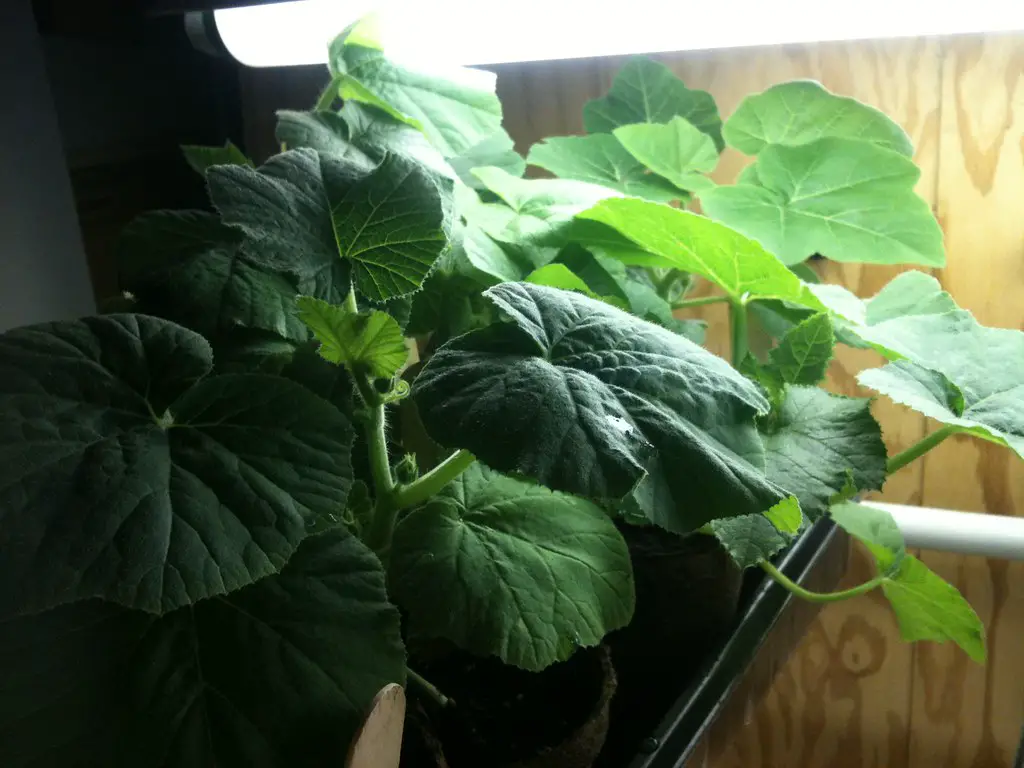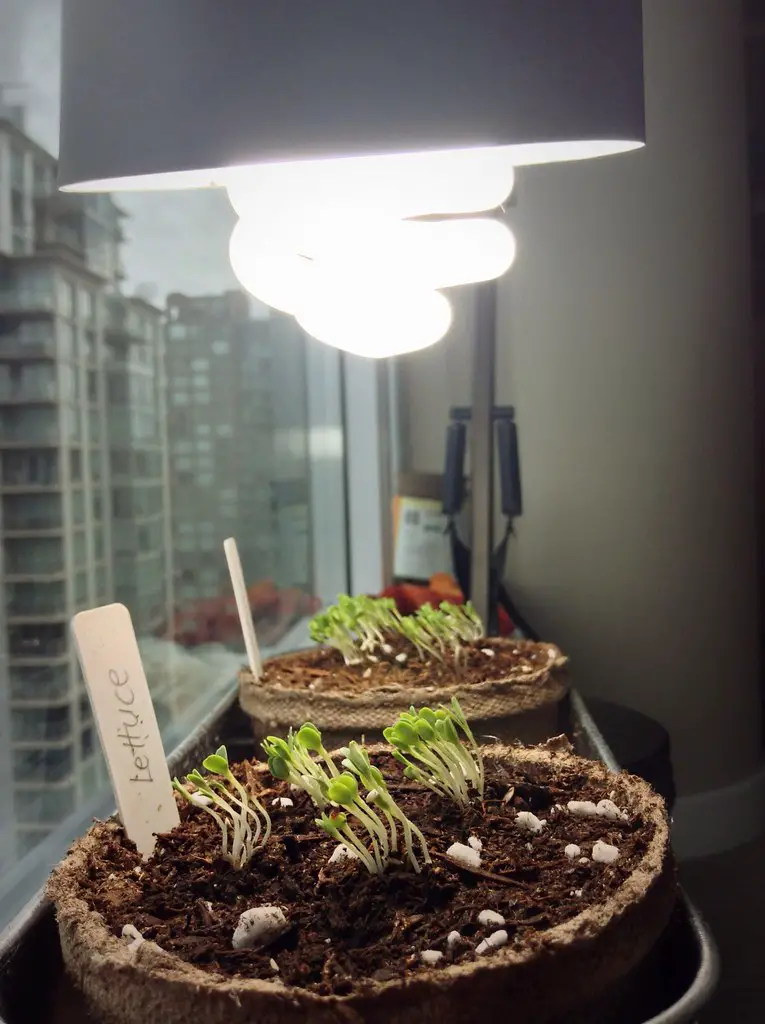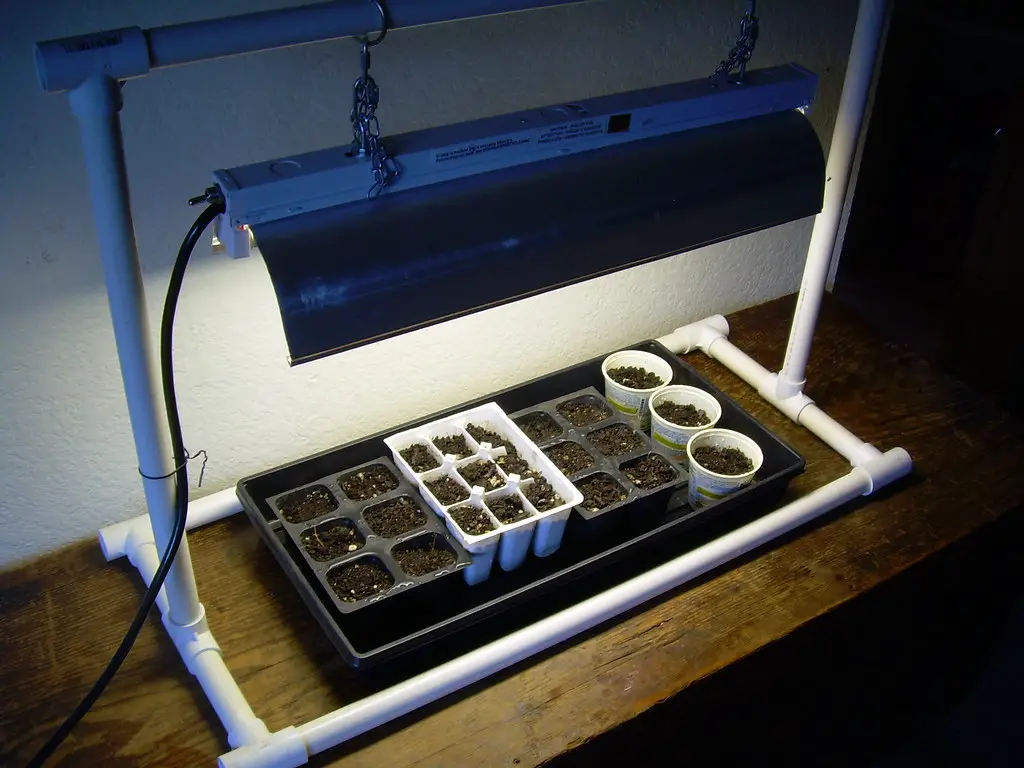How Far Should LED Grow Lights Be From Plants? If you’re growing plants indoors at home you will definitely require lighting and the traditional approach has been to use fluorescent lights however increasingly there has been a need to put use LED lights to save energy. However, when changing from one light source to another one of the most common questions asked is how far should the LED lights be placed from plants to ensure that they get adequate lighting and do not overheat or burn?
The distance that led lights should be placed above growing seedlings will depend upon the wattage of the light being used and the stage that the plant is at. However, as a general rule, it is best to have a light that is no closer than 12 to 20 inches from the seedling. But if you do purchase a globe with relatively high wattage it is important to ensure that the globe is positioned further away from the plant.
Additionally, the distance that the globe is positioned from the plant will also vary depending on the growing stage. Plants that are flowering require additional energy to grow at their optimum. The table below that shows how this varies.
| Wattage | Vegetable (Inches) | Flowering Plant (Inches) |
| 200 | 12 to 20 | 8 to 16 |
| 400 | 20 to 27 | 13 to 21 |
| 600 | 30 to 38 | 18 to 30 |
| 800 | 32 to 42 | 19 to 34 |
| 1000 | 36 to 46 | 21 to 36 |
What Happens If The Light Is Too Far Away?
One of the most common questions that is asked this what happens if the seedlings do not give enough light. Typically what happens is that the seedlings, irrespective of the type of plant become extremely leggy as the plants to search for additional light.
If you aren’t sure about what is normal for a particular plant it is best to try and compare it to commercially grown seedlings as they offered a very good idea of whether the growth habit is normal or not.
The growth habit produced can also be used to adjust your indoor growing setup. If you are producing leggy seedlings this is an indication that you do need to adjust the position of the light.

However, leggy seedlings can be rectified by trimming the plants, however, it is important to ensure that you still keep some leaves on the plant to allow photosynthesis to continue. If you have multi-stemmed plants one of the strategies that can be used is trim half the plant and then wait for the plant to recover before trimming the other half of the plant.
The trimming of the plant will stimulate new shoots to grow just below the point at which it is cut which over time will result in the plant returning to a normal shape.
What Happens If The Seedlings Are Too Close To The Light?
The other problem that is commonly encountered with artificial light sources is when it is position is too close to the plants which will typically result in the plants being burnt. This burning is typically observed as the browning of the leaves.
To confirm that discoloration of the leaves is due to the light source and not a disease problem it is common to see that the most badly affected leaves will be those that are closest to the light.
Another effect that you might encounter is extremely rapid dehydration of the soil in which the plants sit which can result in the plants’ leaves curling up which is a response designed to reduce the surface area of the leaves to reduce the rate of evaporation.

Do You Need To Leave The Light On All The Time?
The other common question that is asked is do you need to leave the light on at all the time? And the answer is that it is not beneficial for the plants to be exposed to constant light as many plants need a period of darkness to perform their normal biological functions.
An example of this includes things like CAM photosynthesis in succulents which is designed to reduce moisture loss during photosynthesis. This process allows the sun’s energy to be stored in a chemical form during the day while collecting carbon dioxide occurs at night through its pores. The process allows the plant to reduce its moisture loss by up to 95%, as moisture is lost when the leaves’ pores are opened.
As a result of this, the most common recommendation when using lights is to mimic the day and night time hours in which you live. In most cases having approximately 12 hours of daylight 12 hours at night is ideal.

However, it is a good idea to ensure that the times in which you have the light on are also when there it is daylight hours, as plants can become over-exposed to light if it is on at night.
The easiest way to do this to use a programmable power board, which can be programmed to shut off during the night and then turn it back on during the day. These types of units are relatively cheap to see the latest price on Amazon click on the link here.
I hope you found this article useful and have great success growing your plants indoors if you have any additional comments or questions please leave them in the section below.
Feature Image: “grow lights at work” by MissMessie is licensed under CC BY-SA 2.0.
Relevant Articles
How Long Does It Take For Carrots Seeds To Germinate? How Does Temperature Effect It?
How Long Does It Take For Aubergine (Eggplant) Seeds To Germinate?
How Long Does It Take Tomato Seeds To Germinate? How To Speed It Up
How Many Seeds To Plant In One Hole? Is It Better To Plant More Than One?
